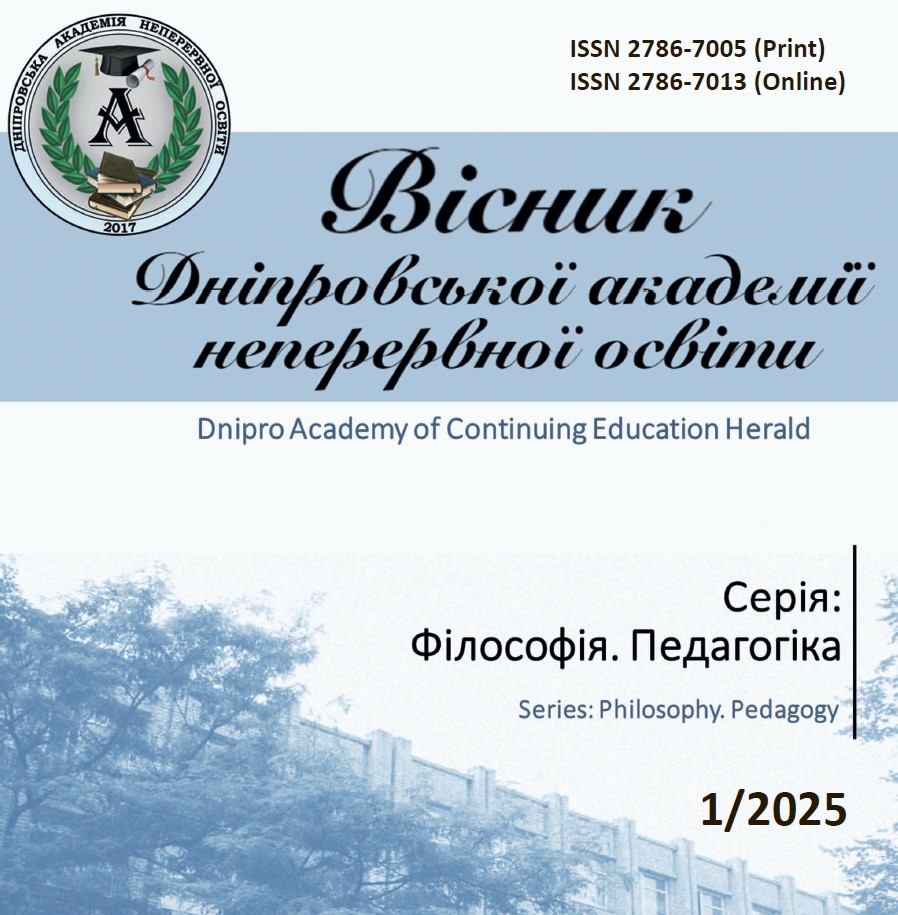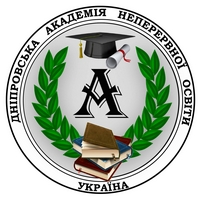CROSS-CUTTING CONTENT LINES OF HEALTH-SAVING TECHNOLOGIES IN THE OUT-OF-SCHOOL EDUCATION
Abstract
The article highlights health-saving technologies as a set of approaches, methods and practices that contribute to the preservation and promotion of the health of participants in the educational process in the context of current requirements defined by the Law of Ukraine «On Education» and «On Extracurricular Education», the Concept «New Ukrainian School» and other regulatory documents. The cross-cutting content lines are analyzed: «Health and Safety», «Environmental Safety and Sustainable Development», «Civic Responsibility» and «Entrepreneurship and Financial Literacy», which are socially significant over-subject topics that help to form students' understanding of society as a whole. The cross-cutting content area «Health and Safety», which develops the ability to apply the acquired knowledge in different situations, is studied. The aspects of the formation of a student as a socially, spiritually, emotionally and physically full-fledged member of society are outlined. Attention is focused on the social aspect of health: formation of communication skills, lifestyle, inclusiveness; emotional aspect: positive attitude, stress resistance, emotional well-being; spiritual aspect: inner harmony, moral values, the ability to self-realization, personality formation; physical aspect: the ability to maintain a healthy lifestyle, to help in the formation of a safe and healthy living environment. It is stated that extracurricular institutions deal with a variety of activities – from art studios to sports sections, and in today's conditions, extracurricular education is an individual approach and is a zone of psychological comfort. The article considers various aspects of the activities of out-of-school institutions in the implementation of health-saving technologies to form a student's value attitude to health. A value-based attitude to health can be developed through the formation of motivation for health promotion. UNESCO research emphasizes that the motivation and emotional state of students directly affect their educational achievements. The study made it possible to determine the prospects for the introduction of health-saving technologies as a tool for qualitative changes in the system of extracurricular education.
References
2. Ващенко О., Свириденко С. Здоров’язберігаючі технології: сутнісна характеристика. Здоров’язберігаючі технології у навчальному закладі. Київ: Шкільний світ, 2009. С. 5–12.
3. Дегтяренко Т. В. Ковиліна В. Г. Психофізіологія раннього онтогенезу: підручник. Київ: УАІД «Рада», 2011. 328 с.
4. Дубогай О. Д., Джуринський П. Б. Компетентнісний потенціал педагогіки здоров’язбереження молоді при формуванні її особистості засобами фізичної культури. Науковий часопис НПУ імені М. П. Драгоманова. Серія 15. Науково-педагогічні проблеми фізичної культури (фізична культура і спорт). 2011. Вип. 10. С. 275–278.
5. Стратегія розвитку позашкільної освіти. 2-ге вид., перер. і доповн. / за ред. проф. О. В. Биковської. Київ: ІВЦ АЛКОН, 2021. 117 с.
6. Педагогіка здоров’я як основа розвитку потенціалу особистості / В. А. Гладуш, Н. В. Зимівець, З. П. Бондаренко, Л. М. Ніконенко та ін. Дніпро: ЛІРА, 2020. 384 с.
7. Загальна теорія здоров’я та здоров’язбереження: колективна монографія / за заг. ред. проф. Ю. Д. Бойчука. Харків: Вид. Рожко С. Г., 2017. 488 с.
8. Корнієнко А. В. Зміст і технології позашкільної освіти для вихованців підліткового віку: методичні рекомендації. Кропивницький: ТОВ «Імекс-ЛТД», 2020. URL: http://lib.iitta.gov.ua/id/eprint/722864 (дата звернення: 11.03.2025).
9. Філатьєва Т. В. Позашкільна освіта як історико-педагогічна проблема. Науковий часопис Донбасу. 2014. № 4. URL: http://nbuv.gov.ua/UJRN/nvd_2014_4_21 (дата звернення: 10.03.2025).
10. Ястребов М. М. Використання веб-орієнтованих технологій у здоров’язбережувальному проєктному навчанні учнів початкових класів: методичні рекомендації. Полтава: Полтавський літератор, 2016. 84 с.
11. UNESCO Memorandum on Non-formal Education. 2011. URL: https://unesdoc.unesco.org/ark:/48223/pf0000144423 (дата звернення: 10.03.2025).

 ISSN
ISSN  ISSN
ISSN 

